Pass out the cigars - As we announced late Sunday night, the official birth of Tammany Two (Tammany Hall II) was Monday, October 1, 2007. Not a very proud day, but surely necessary. The corruption within and around the New York State court system, and the startling lack of oversight and accountability, has given official birth to a corruption scandal that would make Boss Tweed blush....MORE.....
On Wednesday, October 3, 2007, our nation's highest court will address the corruptive abuse, and improper control, of New York's state courts by the long-standing practice of fixing judicial elections.
Here is today's New York Law Journal article by Daniel Wise:
Stakes Are High for State's Judicial Election Process
The New York Law Journal
by Daniel Wise
October 2, 2007
Oral argument will be held tomorrow at the U.S. Supreme Court in the case that has had New York's political and legal establishments on tenterhooks for nearly two years since Eastern District Judge John Gleeson found unconstitutional the state's convention system for nominating Supreme Court candidates.
Handling the lion's share of the argument for the defenders of New York's convention system will be Theodore B. Olson, who was President George W. Bush's first solicitor general and who represented the Bush/Cheney campaign in the case that sealed a Republican victory in 2000.
Arguing for the system's challengers will be Frederick A.O. Schwarz Jr., a former New York City corporation counsel and retired Cravath, Swaine & Moore partner, who is a senior counsel at the Brennan Center for Justice. The center was founded 12 years ago to preserve the legacy of U.S. Supreme Court Justice William J. Brennan, one of the leading voices of liberal jurisprudence in the 20th century.
Mr. Olson, a partner at Gibson, Dunn & Crutcher in Washington, D.C., will handle two-thirds of the defenders' argument as the lawyer for the New York State Board of Elections, the original defendant in the suit filed by the Brennan Center in March 2004.
The defenders' remaining 10 minutes will be handled by Andrew J. Rossman, a partner in Akin Gump Strauss Hauer & Feld in New York, who represents the New York State Republican Party, the New York County Democratic Party and the statewide association of Supreme Court justices, all of whom intervened to defend the convention system.
The Brennan Center's lead plaintiff is Brooklyn Surrogate Margarita Lopez Torres, who won countywide Democratic primaries for Civil Court in 2002 and surrogate in 2005, but was unable to secure a nomination to Supreme Court over opposition from party leaders.
Both Mr. Olson and Mr. Rossman are handling the case pro bono.
The two sides are battling over the ruling of the U.S. Court of Appeals for the Second Circuit, which upheld Judge Gleeson's injunction dismantling New York's 86-year-old system for nominating candidates for the 328 seats on the Supreme Court.
In holding that the convention system violates the First Amendment associational rights of both insurgent candidates, who lack the backing of political leaders, and their followers, Judge Chester J. Straub wrote for a unanimous Second Circuit panel that "through a Byzantine and onerous network of nominating phase regulations employed in areas of one party rule, New York has transformed a de jure election into a de facto appointment."
The panel also included Judges Sonia Sotomayor and Peter W. Hall.
New York is the only state that uses a convention system to nominate judges. Thirty-three states elect at least some of their judges.
In seeking to uphold the lower court rulings, the Brennan Center relies heavily on the fact findings of Judge Gleeson as affirmed by the Second Circuit.
The giving of "de facto" appointment power to party leaders, the Brennan Center contends, creates "a fertile source of corruption, decreasing confidence in [New York's] courts, impeding the search for judicial excellence and failing to achieve a genuinely representative judiciary."
Punching back, the system's defenders in their brief criticize Judge Straub's opinion for giving short shrift to the First Amendment associational right of political parties and failing to recognize that conventions give parties "an inimitable opportunity to assemble and pursue their collective interests by developing balanced tickets of candidates who will represent their diverse constituencies and best advance party goals in the general election."
The stakes in New York are momentous. Last winter, in the wake of the Second Circuit's Aug. 30, 2006, ruling, there was a burst of activity as politicians and court reform and bar groups sought to comply with Judge Gleeson's order requiring that a new system be in place for this year's election (NYLJ, Jan. 26, 2007). That activity came to a halt when the U.S. Supreme Court granted certiorari on Feb. 20.
Meanwhile, Governor Eliot Spitzer readied legislation to enact a constitutional amendment providing for the appointment of judges in New York who currently must run in elections (April 24, 2007).
Amici Interest
The case has generated significant interest from outside groups, with the challengers drawing 11 briefs in support of their position to three for the defenders.
An array of liberal and conservative organizations have signed onto briefs supporting the challengers, including the American Civil Liberties Union and the Washington Legal Foundation.
Also supporting the Brennan Center are the City of New York, the New York state and New York City bar associations and three former chief administrative judges of New York's court system, Richard J. Bartlett, E. Leo Milonas and Joseph W. Bellacosa.
See briefs submitted to the Supreme Court in this case.
The defenders gained the backing of the National Republican Party. And the two sides have split support among groups of black and Asian lawyers, but three Hispanic bar groups have sided with the challengers.
Looking at the current makeup of the court, Nathaniel Persily, a professor of election law at Columbia Law School, predicted that even though there are no cases directly on point, the challengers' arguments will "quite likely appeal to the Supreme Court's four liberal justices (Justices Stephen G. Breyer, Ruth Bader Ginsburg, John Paul Stevens and David H. Souter).
Justice Anthony M. Kennedy is a question mark, said Mr. Persily, who has no connection to the case but has voiced "frustration over anti-competitive practices by entrenched incumbents and political parties."
The views of Chief Justice John G. Roberts and Justice Samuel A. Alito are more of a question mark, but they have expressed conservative views in cases relating to campaign finance and partisan gerrymandering, Mr. Persily said.
Based on their prior opinions, he added, Justices Anthony Scalia and Clarence Thomas are likely to be receptive to the political party's claims that they should be free from judicial interference.
Douglas H. Kellner, the Democratic co-chairman of the state Board of Elections, said in having Mr. Olson argue the case, it was felt that he would be "the ideal spokesman for a bi-partisan agency in appealing to constitutional values of the current majority of the Supreme Court."
Unlike Mr. Rossman, who has been representing the intervenor-defendants from the outset of the case, Mr. Olson first officially appeared in the case when he filed a reply brief in January in support of the Board of Election's request for certiorari.
Different Frameworks
The two sides have taken very different approaches in framing their arguments. The Brennan Center aims to keep the focus on the lower courts' findings that the New York statute requiring conventions creates what the center described as a "statutorily rigged" and "locked" system to which only party leaders hold the key.
Both of the defender briefs attack the doctrinal basis that the Brennan Center asserts confers associational rights on political party outsiders. That approach, the defenders contend, ignores the substantial associational rights that belong to political parties and will create havoc by throwing into constitutional jeopardy convention systems that are used by 32 states to select candidates.
The extensive findings of Judge Gleeson compels the conclusion, the Brennan Center argues, that the convention system is such a minefield to a political outsider that it is "virtually impossible" to traverse without support from party leaders.
To field a slate of delegate candidates who could wrest control of a convention from party leaders, New York law requires insurgent candidates for Supreme Court to recruit anywhere from 48 delegate candidates to 370, depending on which of the 12 judicial districts they are running in.
An insurgent candidate would have collect a minimum of 4,500 to 12,000 signatures to get a slate of delegates to force a primary at which control of the convention could be contested, the Brennan Center contends. (Party conventions are held about a week after the primary.)
Also, the center's brief points out that Judge Gleeson found that to withstand legal challenges, delegate candidates would need to collect two to three times the number of minimum signatures. He also found that insurgent Supreme Court candidates need to educate party members as to which delegate candidates are backing them because party rules forbid identifying on the primary ballot the names of candidates whom delegates are supporting.
Judge Gleeson also found that party leaders can easily collect needed signatures because their petitions include the party's candidates for all major offices as well as those running for a judicial convention.
The Brennan Center cites a line of U.S. Supreme Court precedents prohibiting the imposition of severe burdens on candidates access to the ballot as violating the First Amendment associational rights of candidates and their supporters.
One of the oldest and most directly analogous cases is the Court's 1968 ruling in Williams v. Rhodes, 393 U.S. 23, in which the Court voided an Ohio law that required third parties seeking to field presidential candidates in the general election to collect 15 percent of the votes in the last gubernatorial election.
Mr. Olson's brief takes direct issue with the Brennan Center's claims, asserting that the U.S. Supreme Court has "never held that candidates - insurgent or otherwise - have a First Amendment right of untrammeled access to a political party's nomination." Nor, the brief added, has the Second Circuit cited any "pertinent authority whatsoever" for its conclusion that insurgent candidates and their supporters have First Amendment associational rights in the candidate-selection process.
The defenders urge that an affirmance would cast into doubt convention systems used in 32 states to nominate candidates, and trammel upon the associational rights belonging to political parties.
The selection of a candidate becomes "central in determining both the content, and ultimately, the currency of a party's political message," Mr. Olson's brief observed in arguing that prior U.S. Supreme Court precedent's reserve a "special place" for political parties' associational rights.
The New York State Attorney General's Office also filed a brief defending the constitutionality of the state's convention system. The brief was prepared by Solicitor General Barbara D. Underwood, Deputy Solicitor General Benjamin N. Gutman and Assistant Solicitor General Denise A. Hartman.
In the joint brief by the intervenor-defendants, Mr. Rossman represents the New York County Democratic Party. The state Republican Party is represented by Carter G. Phillips of Sidley Austin. Joseph L. Forstadt of Stroock & Stroock & Lavan represents the justices' association.
Paul M. Smith of Jenner & Block and Kent Yalowitz of Arnold & Porter also worked on the Brennan Center brief.
- Daniel Wise can be reached at dwise@alm.com.
MLK said: "Injustice Anywhere is a Threat to Justice Everywhere"
End Corruption in the Courts!
Court employee, judge or citizen - Report Corruption in any Court Today !! As of June 15, 2016, we've received over 142,500 tips...KEEP THEM COMING !! Email: CorruptCourts@gmail.com
Most Read Stories
- Tembeckjian's Corrupt Judicial 'Ethics' Commission Out of Control
- As NY Judges' Pay Fiasco Grows, Judicial 'Ethics' Chief Enjoys Public-Paid Perks
- New York Judges Disgraced Again
- Wall Street Journal: When our Trusted Officials Lie
- Massive Attorney Conflict in Madoff Scam
- FBI Probes Threats on Federal Witnesses in New York Ethics Scandal
- Federal Judge: "But you destroyed the faith of the people in their government."
- Attorney Gives New Meaning to Oral Argument
- Wannabe Judge Attorney Writes About Ethical Dilemmas SHE Failed to Report
- 3 Judges Covered Crony's 9/11 Donation Fraud
- Former NY State Chief Court Clerk Sues Judges in Federal Court
- Concealing the Truth at the Attorney Ethics Committee
- NY Ethics Scandal Tied to International Espionage Scheme
- Westchester Surrogate's Court's Dastardly Deeds
Tuesday, October 2, 2007
U.S. Supreme Court Hearing on NY Election Fraud.....(CLICK HERE FOR FULL STORY)
Subscribe to:
Post Comments (Atom)
Blog Archive
-
▼
2007
(167)
-
▼
October
(30)
- New York Law Journal on Whitewashed Ethics Complai...
- Newly Filed Lawsuit Seeks Federal Monitor Over NY ...
- Recent Clawing for Another Rigged Election Fails.....
- Pirro Cost Westchester County Millions....(CLICK H...
- Moonlighting Judge Faces Disciplinary Charges...(C...
- Lawyer Scams Widow, then System ....(CLICK HERE FO...
- Astor Judge Scarpino vs. Attorney General Cuomo…(C...
- $40 Million Reasons Not to Lie to Jonathan Lippman...
- Re: FBI - U.S. Department of Justice
- Geography Determines Attorney Misconduct....(CLICK...
- Federal Court Okays Lawsuit vs. Admin. Judge; Fede...
- Local Report on Judge's Anger Over Election Fix Bl...
- An October 14, 2007 Journal News Editorial...(CLI...
- Wake Up and Smell the Court Corruption ! ...(CLICK...
- Insight Into How to Fix Judicial Elections....(CLI...
- Administrative Judge Nicolai Upset Election Can't ...
- NY Judge says Lawyer Has "Nice Butt"....(CLICK HER...
- Insight Grows in Attorney Sex Probe....(CLICK HERE...
- Esq. Sex Probe Leaves No Confidence in Ethics Revi...
- Smoking Gun Flavors Carvel Charity Fraud...(CLICK ...
- The Never-Ending NY Judicial Election Scam....(CLI...
- No Attorney Oversight Leads to More Crimes by Lawyers
- Concealing the Truth at the Attorney Ethics Commit...
- Man Pleads Guilty to Federal Felony, Then Gets Law...
- Even U.S. Supreme Court Laughs at NY Election Scam...
- Disgraced Ex-Chief Judge Wachtler Regains Law Lice...
- Great NY Times Editorial on NY Election Fraud...(C...
- U.S. Supreme Court Hearing on NY Election Fraud......
- Is Judge Really Concerned Lawyers Will Get Astor ...
- Court Corruption Needs National Spotlight....(CLIC...
-
▼
October
(30)
See Video of Senator John L. Sampson's 1st Hearing on Court 'Ethics' Corruption
The first hearing, held in Albany on June 8, 2009 hearing is on two videos:
Video of 1st Hearing on Court 'Ethics' Corruption
The June 8, 2009 hearing is on two videos:





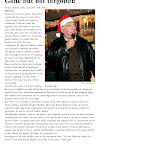

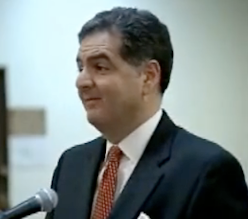
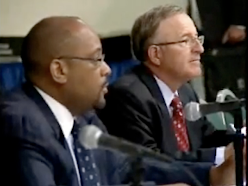
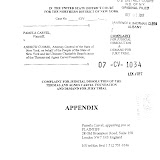
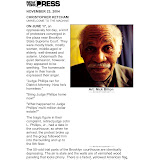
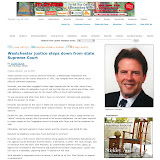
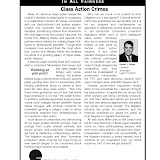

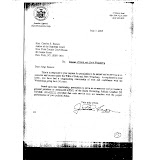
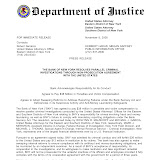
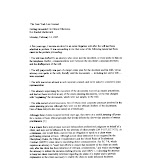
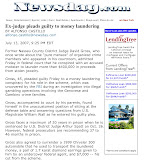
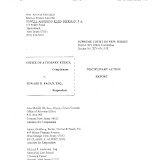
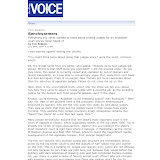
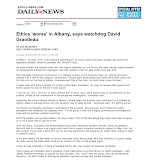
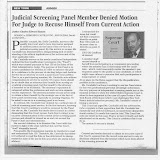

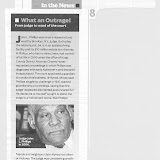
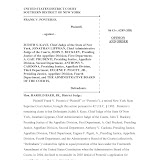
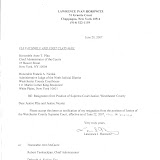
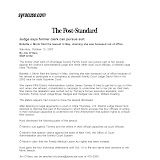
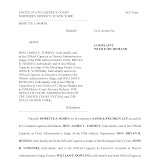

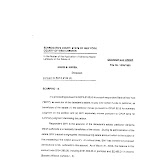
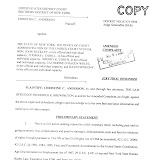
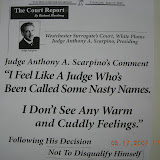
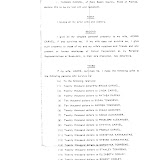
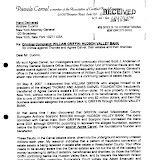
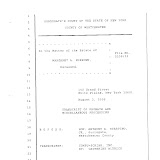
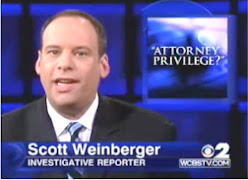
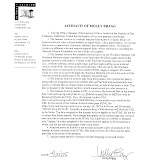
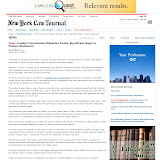
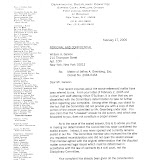
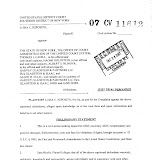
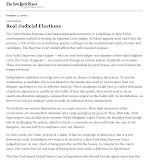
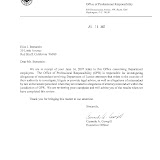
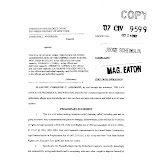
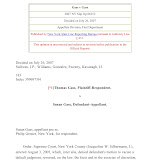
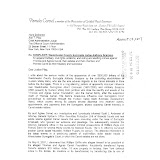

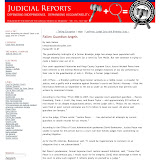
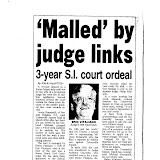
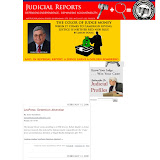
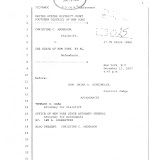
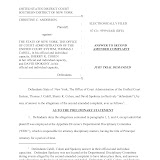
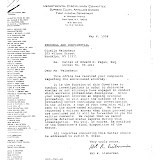
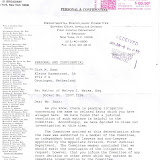
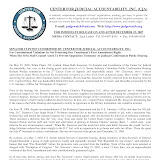
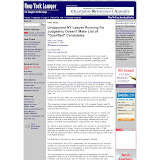
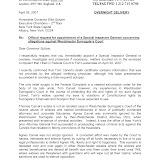
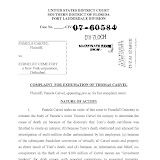
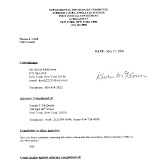
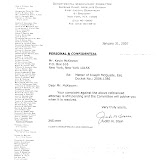
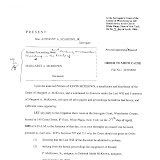
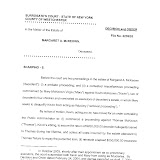
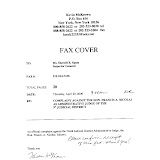
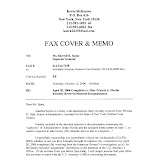
8 comments:
I am a descendent of William M. Tweed, who you so negatively refer to as “Boss” Tweed. I resent the suggestion that he would “blush” at the current state of corruption in our New York court system. Our family is quite proud of the fact that he headed Tammany Hall in the late 1800’s, and which stole between $75 million and $200 million from the public. (Do you have any idea how much that would be worth in today’s dollars?!)
If not for William Tweed, we would not have had such a movement of reform in New York, indeed- in U.S., politics. (I note that then-special prosecutor Sam Tilden forgot to mention that fact years ago, instead choosing to focus on the bookkeeping error where William overcharged the city $11 million on a $400,000. building project.)
Our family fondly credits William Tweed as the first true New York political boss who, through extortion and threats, masterfully manipulated and controlled judges, public employees and the system.
From where else, but William Tweed, do you think today’s court administrators now get their lead?
Please, let’s give credit where credit is due. Indeed, William Tweed would be proud of the rampant corruption in our New York court system.
I have some words for those people on the U.S. Supreme Court: WILLIAM TWEED IS WATCHING DOWN (or up) ON YOU !!
The thugs, er-folks, who now corrupt and abuse the court system in New York, and who masterfully control judicial elections, should be honored to be compared to the likes of William Tweed, may he rest in peace.
Bessie Tweed
Even Bill Tweed would be ashamed at the bad name that corruption has gotten...these new people have no respect
ONLY THE FEDS CAN CLEAN UP THE CORRUPTION IN NEW YORK STATE.
This is living history- very exciting. A huge corruption of the NYS court system, and we're here to witness it. This is great.
So tell me what's charged over all these years, the sharks are still running the place!
why don't candidates for elected office speak out about the crimes in the courts?
There are a lot of questions about Judge Peter Rosato and his relationship with lawyers on current cases.
Similar situation to my ex. Remember former Suffolk County Legislator George Guildi? Ethan Ellner? Donald McPherson, Carrie Coakley? Dustin Dentin? S&M bondage club Manhattan? Straw Buyers? Steve Levy aka he who could not be named? Financial disclosure forms: State or County office? Which form should County Exec file? Is it a state or county position? Should the County Executive have to include his wife's business income in his financial disclosure? Even if that business is court reporting/ stenography? What if that court reporting company does 80% of Suffolk County's stenography? Any recollection of the arrests of Stephen Baranello and Wayne Prospect for selling county contract work (because they were in with high ranking Suffolk official?) Any recollection of a high ranking Suffolk County official announcement that they were not to run for re-election because a District Attorney investigation of 16 months, raised serious issues in his fundraising practices? That same DA had his own term limit repealed due to his assertion that his office was "state" not "county".
The repealed term limit also applied the Suffolk County Clerk- isn't it the County Clerk responsible for filings of MERS transactions
Post a Comment